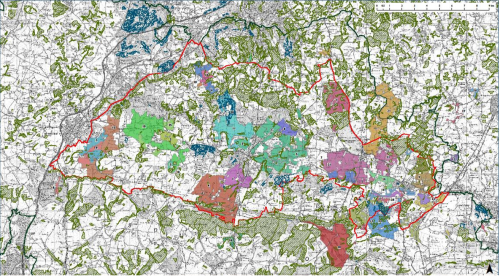Ref: CSFF140012
Lead: Colin Hedley, cjhedley@btinternet.com
Group members: 31
Length of agreement: 3
Area of group (Hectares): 8667
The Rother Valley combines arable farmland with a narrow floodplain grazing marsh/fen and wooded valleys. The underlying aquifer is essential to the area. Poor continuity between river and land, highly erodible soils and sediment issues generate much debate. For all these reasons (and more) the RVFG will deliver the following CS priorities:
Biodiversity: Priority Habitats: – Lowland heathland – Lowland dry acid grassland – Ancient and native woodland – Floodplain grazing marsh and associated ditch, fen and riparian habitats (Rother Valley SNIC designation) – Arable field margins
Priority Species: – Yellowhammer – Lapwing – Barn owl – Rare Arable Plants – River (Aquatic freshwater) Invertebrates
Arable Plant Assemblage: An important arable plant assemblage exists, e.g. nationally endangered Red-tipped Cudweed; Wild Snapdragon and Corn Spurrey.
The Wild Pollinator and Farm Wildlife Package: This will be applicable to many holdings and the principle of providing year round and spatial requirements will be promoted.
Water Quality: – Nitrate in drinking water sources – Phosphate and sediment in surface waters – Pesticide residues reaching/accumulating in rivers. The above impacts on fish/wider species diversity and riverine ecology in addition to Southern Water’s abstraction at Hardham.
Historic Environment: Historic canalisation of parts of the Rother (e.g. stone locks); historic parkland (e.g. Petworth); traditional farm buildings; Woodland Management and Planting: ASNW, plantation and broadleaved woodland is present with considerable potential for new woodlands to counter erosion and flood risk.
Landscape: Hedgerows; Trees; Permanent grassland; field margins; sunken lanes are important features.

